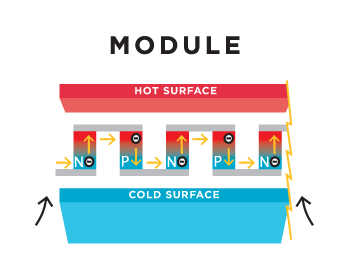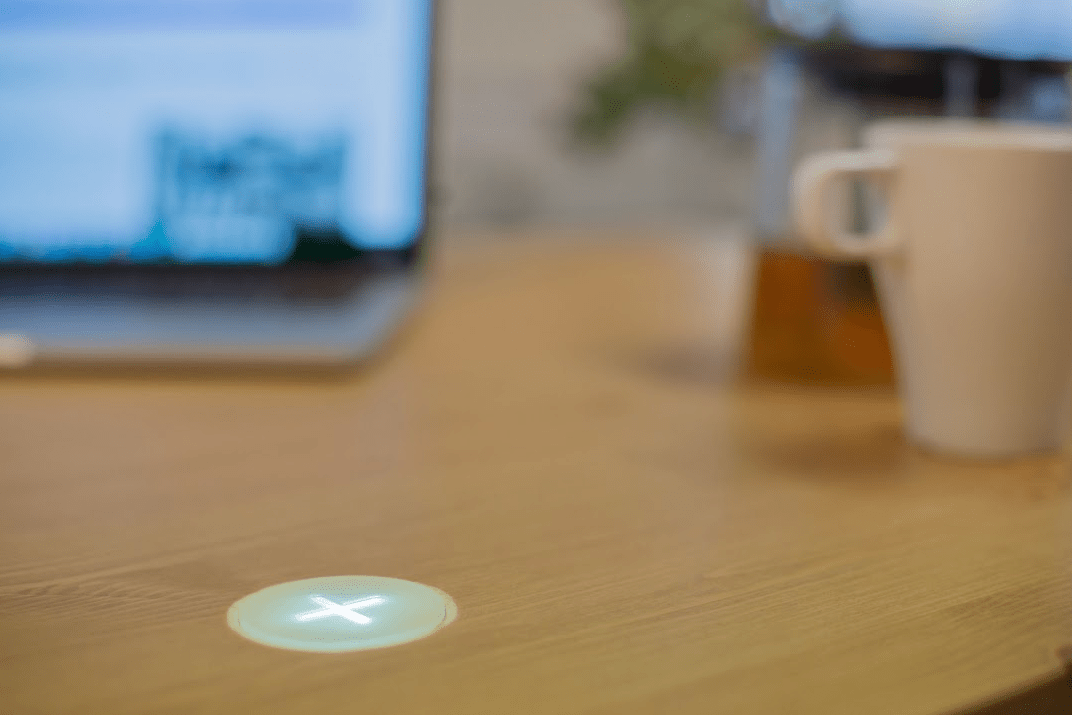Your computer, your gaming console, even your cup of coffee — all of these objects in your house radiate heat, which promptly goes to waste. But what if your kitchen table or console cabinet contained the thermoelectric hardware to turn that heat into usable electricity?
For centuries, that idea was just a dream. But emerging thermoelectric technology is bringing it closer to reality, with companies like Alphabet Energy — recently profiled by NPR — developing thermoelectric generators using nano-scale materials (more on that below).
Sergey Komardenkov and Vihanga Gore, design students at Copenhagen’s Institute of Interaction, recently proposed the idea of embedding this technology in furniture to IKEA; a dinner table or a desk could absorb heat from a plate of food or a laptop and turn it back into electricity. They call the idea Heat Harvest, and it was developed at an IKEA-run research lab opened this autumn in Copenhagen called Studio10.

According to the duo’s project description, a normal laptop will consume about 40 watts of electricity and emit the same amount of heat during operation. A Heat Harvest desk would use an embedded pad to absorb that latent heat and run it through a small thermoelectric generator, then push the resulting electricity back to the surface of the table through a wireless charging dock. You could put your coffee down on your desk and charge your phone simultaneously from the absorbed heat.
IKEA started selling kits to convert its furniture into wireless charging stations last year, but involving thermodynamics would be much, much more complicated. Again, this is a concept, not a reality. “This is a concept that’s been well-known for 200 years,” says Komardenkov, “but recent developments in nanotech make it a more efficient option to harvest energy back from heat.”
He’s talking about a longstanding problem with thermoelectrics: It requires a material that is both a great conductor of electricity and a really bad conductor of heat. That’s because the conversion process takes advantage of heat differences in a given conductor to generate voltage, as the below gif from Alphabet Energy explains.

Until recently, these kinds of materials were extremely expensive and rare. But start-up energy companies like Alphabet Energy or Tellurex are developing low-cost versions that use nanotechnology to make any old semiconductor worse at conducting heat — making it possible to use them as thermoelectric generators.
Obviously, this tech is incredibly nascent, but these companies are demonstrating that they’re getting closer to making the long-standing dream a reality.
It might be a (long) while before you see a Heat Harvest pad in an IKEA bin (Five for 99¢!), but Komardenkov and Gore wanted to demonstrate how a real emerging technology could be scaled down to fit into the every day lives of users.

What would this material science look like on a kitchen table? How could we make it friendly and usable as possible? That’s IKEA’s mandate as a company, so if and when thermoelectricity arrives in our homes, it will be ready.
All images courtesy of Studio10/IKEA.
